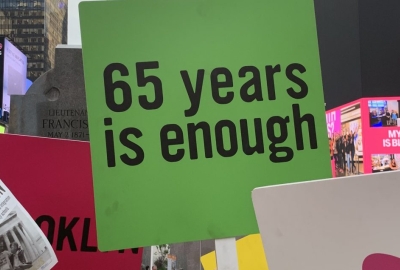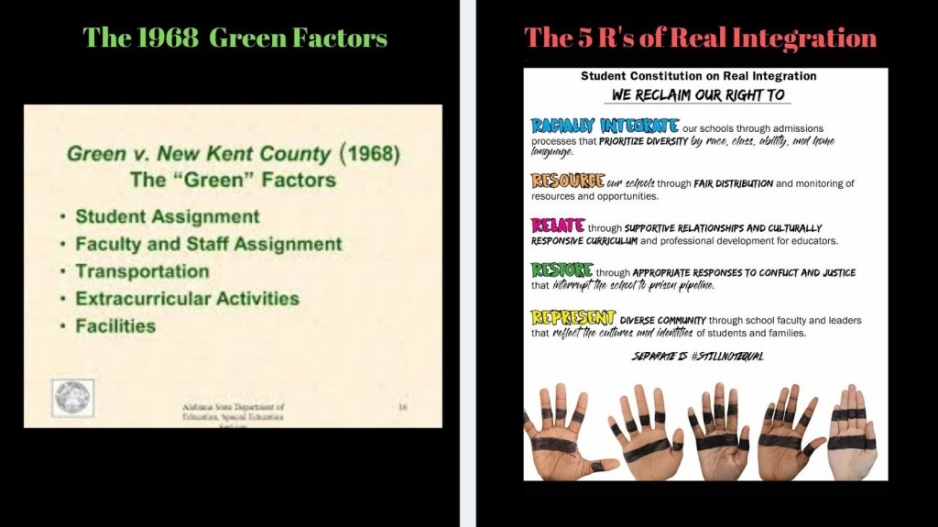
By Matt Gonzales
In 1981, NYU Metro Center established the Desegregation Assistance Center (known today in USDOE as the Equity Assistance Centers) to support the important mission outlined by the historic 1954 Supreme Court Decision Brown v. Board of Education of Topeka Kansas, which outlawed segregated schools in America. In subsequent years, NYU Metro Center began its four-decade tracking of the Brown decision through a series of National Invitational Conferences, ultimately expanding its work across many educational equity domains.
In the 65 years since the Brown decision and in the 40 years since NYU Metro Center first took up desegregation work, segregation remains. Many districts have been lifted from desegregation court orders, while others have bowed to white parental resistance to avoid addressing the issue of separate and unequal schooling. Today, schools across American are more segregated than they were in the 1960’s, with New York City being the third most segregated school system in the country. Only recently has NYC leadership summoned a willingness to address educational segregation.
Further, what had become a side issue in the past couple of decades recently lept to the national spotlight. The clash between presidential candidates Sen. Kamala Harris and former Vice President Joe Biden over the issue of busing at the first of the 2019 Democratic Presidential Debates reignited the national conversation on school integration. While the exchange was exhilarating, the exhilaration quickly turned to frustration. The onslaught of media attention that centered on busing following the debate lacked the necessary nuance that a new wave of integration advocates have added to the conversation since Brown. By focusing on busing (an issue that epitomizes an earlier generation’s struggle), the media obscured what the current struggle for integration is about.
Recently, I had the pleasure of speaking on a panel in California about the struggle for school integration in New York City. I asked the audience, “What comes to mind when I say the word integration?”
Four of five people said, “Busing!”
While it’s important to understand the racialized history of “forced busing,” it’s equally important to understand the tragic experiences of the many Black and Latinx children who attended desegregated schools as a result of busing. As I outlined in a previous article, the history of desegregation brings up intense trauma for communities of color. Any iteration of modern day integration must be accomplished through a framework grounded in racial justice.
Thus, while most people are familiar with the Brown decision and can often even recite the iconic statement: “separate, is inherently, unequal,” another court case actualizes the vision of integration advocates are pressing for today. The 1968 Green vs. Kent County case, which came as a result of the slow pace of desegregation efforts following the Brown I and II decisions, established the “Green” factors, which would be used to determine whether a school had successfully integrated. These factors included the “ratio of black to white students and faculty, and absolute equality in facilities, transportation, and extracurricular activities.” They identified a broad set of investments, beyond student assignment, that needed to be made for schools to move beyond desegregation, towards integration, and beyond the premise that simply moving bodies was the goal of integration.
Fortunately, a framework that grows out of and extends Green exists. In New York City, the youth-led organization IntegrateNYC designed the 5R’s framework, whose major elements, which are reminiscent of the Green factors, are currently being implemented by the New York City Department of Education.
IntegrateNYC’s 5 R’s of Real Integration have captured the essence of the Green factors, and have modernized them to fit the priorities of today’s students.

Over the past two years, I have had the honor to serve alongside these student allies and many other amazing advocates and educators from across New York City as a member of the School Diversity Advisory Group (SDAG) commissioned by the mayor of NYC. The SDAG has released two sets of recommendations that were designed using the framework articulated by IntegrateNYC. The recommendations are holistic and comprehensive, touching all five of the aspects of educational segregation identified by IntegrateNYC’s youth leaders. They are grounded in the transformation of educational spaces, beyond cosmetic reforms, to achieve the goals laid out by both the Brown and Green decisions.
Committed to this student-designed framework, I am excited to bring this vision of integration to NYU Metro Center to help reignite its historic roots as a desegregation assistance center. In doing so, I hope to build on the legacy of Dr. LaMar P. Miller, Dr. Pedro Noguera, and NYU Metro Center’s current Executive Director Dr. David Kirkland, with the introduction of our new initiative: The Integration and Innovation Initiative (i3). i3 aims to partner with districts, schools, and communities throughout the United States and beyond to design and develop innovative and equitable solutions to educational segregation. We will support our partners in developing integration plans that center policy and practice in racial justice and community voice. Our work will seek to interrupt the patterns of concentrated privilege and vulnerability that defines segregation through innovative approaches to student assignment; support the creation of inclusive and culturally sustaining spaces; deconstruct discipline practices that disproportionately impact students of color; and invest in culturally sustaining hiring practices that ensure equitable representations of faculty and staff.
Further, leveraging the many dynamic resources of NYU Metro Center and our community and organizational partners, i3 will support stakeholder engagement, strategic partnerships, policy development, critical applied research, participatory reform, and advocacy to ensure sustainable and meaningful integration that is grounded in equity, justice, and social transformation.
The legacy of segregation lingers within our schools and communities to this day. Still, I am convinced that a future driven by our young people and that cultivates and honors intersectional diversity and plurality is not only possible: As the award-winning novelist Arundhati Roy so aptly put it, “she is on her way. On a quiet day, I can hear her breathing.”
